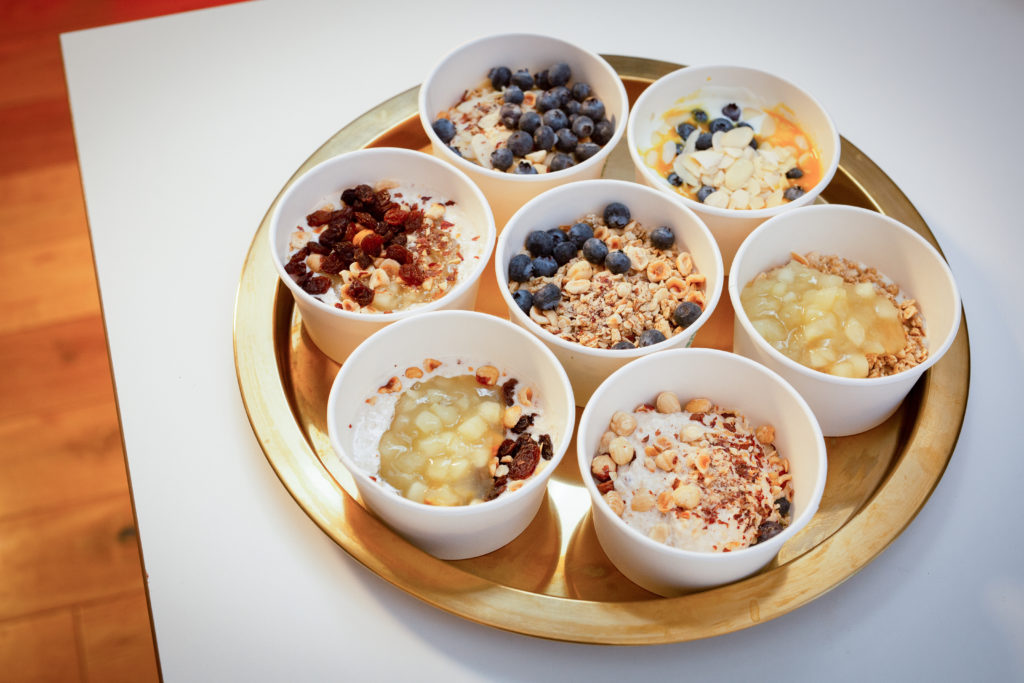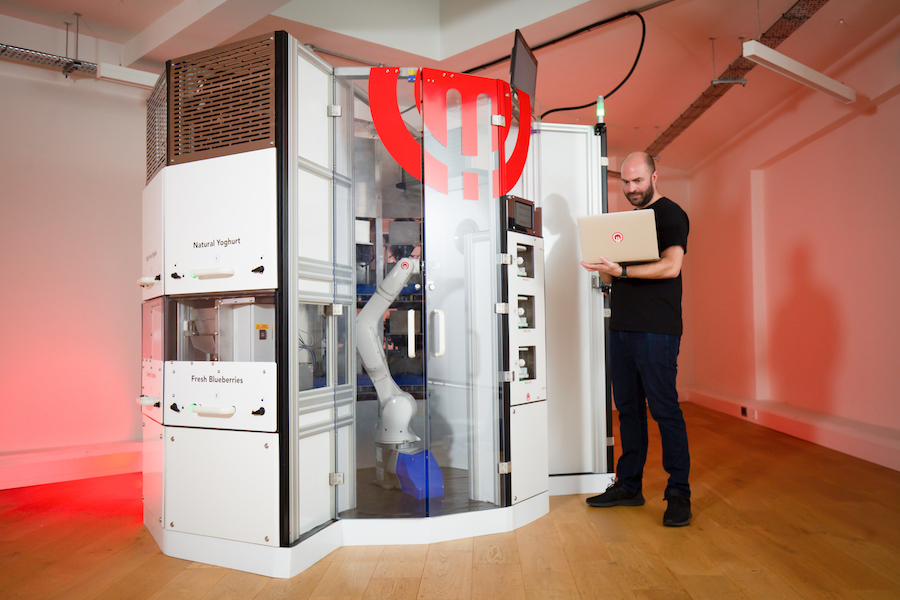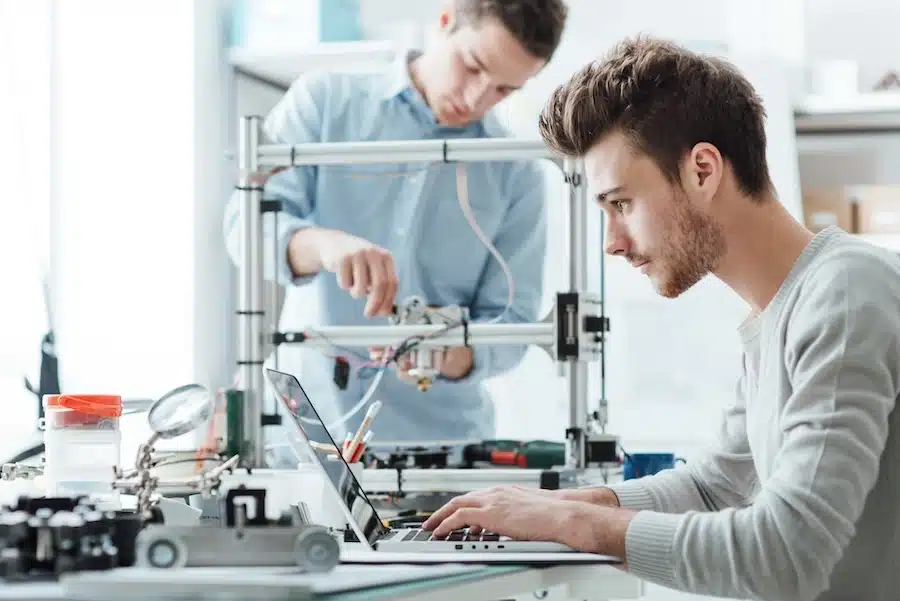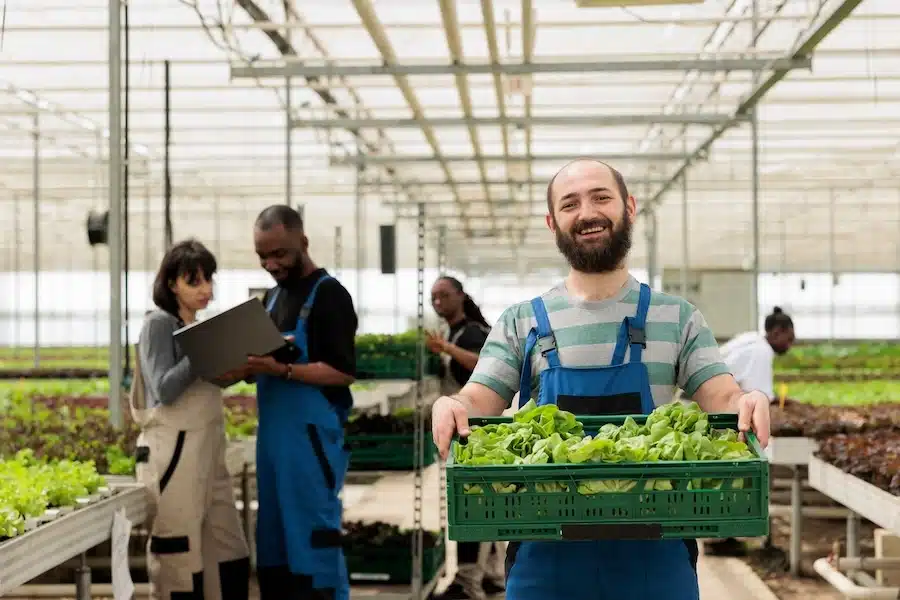Robot canteens and other forms of cutting-edge automation are offering fast-service restaurants a feast of culinary and financial advantages. But do restauranteurs have an appetite for innovation?
British restaurants have had a difficult few years.
The Coronavirus pandemic and subsequent social restrictions have decimated their revenues. At the same time, they face increasing pressure to cater to consumers’ growing desire for meal customisation, to maintain appropriate staffing levels in the gig economy, and to cut down on food waste, a significant contributor to climate change.
Faced with these and other challenges, more and more restaurant chains are exploring automation as a way to increase efficiency, improve staff motivation and enhance customer satisfaction.
One of the companies at the forefront of this technological revolution is Karakuri, developers of the Semblr food service robot.
Karakuri’s CEO & founder, Barney Wragg, recently spoke to GrantTree’s innovation podcast, What Comes Next? about how automation could benefit this vital but vulnerable sector.
What is Semblr?
Semblr, formerly the DK One, is a prototype meal preparation system that can produce more than 2,700 different dishes. Combining advanced robotics and AI, Semblr allows users to precisely customise their orders by choosing exact quantities of various ingredients.
Centred around a six-axis robotic arm, and equipped with unique portioning technology, Semblr can deliver up to 110 meals per hour (1.8 a minute), accommodate up to three menus in a single day and assemble a range of dishes including Poke Bowls, World Flavour Bowls, Buddha Bowls and Smoothie Bowls.
Semblr was recently put to work at Ocado’s head office – Ocado is one of Karakuri’s largest investors – where it served Asian Fusion bowls comprising 17 different ingredients, including hot and cold items, sauces, fresh toppings and garnishes.
As Wragg told What Comes Next?, Semblr’s true power can be found in its ability to identify and manipulate ingredients of all different sizes, shapes, textures and temperatures.
While traditional robots, like those you might find on a car assembly line, handle components of uniform size and physical behaviour, food comes in a wide variety of conditions, states of matter and viscosities.
However, by employing a consortium of sensors and other proprietary technologies, Semblr is able to combine a menagerie of edible substances into meals that are both easy on the eye and safe to consume.

The consumer experience
So, what would it be like to order food from a system like Semblr?
Wragg told What Comes Next? that the key improvement in user experience Semblr will deliver is complete customisation.
The process of ordering food would begin in much the same way. You would enter a restaurant or visit their page on your Deliveroo or Just Eat app, and start off by choosing your primary dish. A salad or a burrito, for example.
Under the item you would see all of the ingredients it contains, plus the nutritional information; how many calories it has, how much salt, and so on. This level of granularity would be possible thanks to the predictability with which Semblr can gather and combine ingredients.
Then, you would then be able to precisely edit how much of each ingredient your meal contains, right down to the individual gram.
You would also see how each choice alters your order’s nutritional content, meaning you could dial down its sugar content or increase the amount of fibre it has, in accordance with your dietary needs. You could also completely remove any allergens or irritants.
In the not-too-distant future, a system like Semblr could connect to your smartwatch or another biometric device, and give you suggestions based on your goals, up-to-the-minute physiological data, or in line with how much exercise you have done – or haven’t done – that day.
“You’ve only walked 35 steps today so you can have chips but you can only have two,” Wragg jokes.
Once you’re happy with your order, you would simply hit ‘confirm’, pay via an app, and the Semblr system would prepare your meal.
As our understanding of nutrition improves generally, but also the specific needs of our body, this level of customisation could do wonders for our physical and mental wellbeing.
What Comes Next? Co-host Amy Dickens also highlighted a secondary effect of this level of customisation: food education.
Seemingly health choices aren’t always better for us. Salad dressing, for example, can contain a great deal of salt and fat. But by using a system like Semblr, we would be able to see what impact each of our decisions has on our nutritional intake, which may encourage better decision-making generally.
“You can only improve what you can measure,” Wragg agrees.

An appetising opportunity for restaurants
By using advanced preparation systems like Semblr, consumers will receive much greater control over their meals. This improved customer experience would be a boon for restaurants. And there are other advantages of deploying such a system, too.
One of them is the quantity of data such a system would provide restaurants. Wragg envisions combining information from Semblr, which can equip restaurateurs with exact information on ingredient consumption and consumer patterns, with external variables like weather forecasts, traffic reports, and seasonal trends.
This would help restaurants make much more accurate predictions about how much food they need to order, meaning they could optimise their supply chains. The main benefit of this is that it would help eateries cut down on food wastage, an issue which is the surge of any establishment’s bottom line.
According to the CPD Online College, which provides certified courses on hygiene, health & safety and care for culinary businesses, UK restaurants produce almost 200,000 tonnes of food waste every year, the equivalent of 320 million meals, five for every person in the country.
CPD says this wastage costs the industry an eye-watering £682 million annually. Moreover, it accounts for an incredible 10% of manmade greenhouse gas emissions.
Autonomous reparation systems may also help restaurants solve issues related to staffing. While previously, high football restaurants would hire staff for a few hours a day to cope with the lunchtime rush – these employees would be referred to as ‘lunchies’ – establishments now find that people are now much less willing to work for such a short window when they can find longer or lucrative ‘gigs’ elsewhere.
To cope, eateries now tend to hire a smaller workforce or longer-hour contracts. Barney says this has created a morale problem: “Staff are underutilised in the quiet times and then over utilised in the busy times.”
By removing some of their workload, Karakuri is hoping to remove this issue.
Automation, which can shoulder some of the strain placed on staff, could help restaurants address this problem, and therefore have a measurable, positive impact on customer satisfaction and employee retention.

So, when will we see robots in our kitchens?
It’s hard not to be excited by the prospect of ordering food from a sophisticated, all-customising machine. But when will we see these slick devices being wheeled into kitchens?
Wragg was understandably shy about committing to firm timelines. Though he was bullish about the amount of interest Karakuri is attracting: “Customers interested from Australia to Canada and all over Europe.”
However, he did mention that Semblr was just the beginning, though, explaining that Karakuri has “cracked the canteen problem” and is now exploring “other problems in the catering industry. Where else can automation make a big human and business impact?”
Let’s hope the answer is as mouth-watering as Semblr’s Asian Fusion Bowls.
To stay up to date with all the latest on Karakuri, make sure you follow them on Twitter and Instagram on @karakuri_tech.
For more stories about cutting-edge UK innovation, be sure to subscribe to Granttree’s newsletter.





